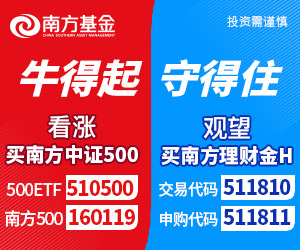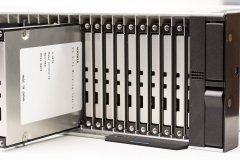As in ANCA vasculitis, avacopan demonstrated statistically significant improvement in renal function as measured by eGFR compared to placebo over 26 weeks of blinded treatment
The change from baseline to week 26 in C3 glomerulopathy histologic index (C3G HI) for disease activity (primary endpoint) was not statistically different between the two treatment groups, while the C3G HI for disease chronicity (measuring progression of fibrosis) shows significant benefit for avacopan versus placebo
Avacopan safe and well tolerated in C3G patients
ChemoCentryx and VFMCRP plan to discuss registration pathway with regulatory agencies in US and EU
ST. GALLEN, Switzerland & MOUNTAIN VIEW, Calif. -- (BUSINESS WIRE) --
Regulatory News:
This press release features multimedia. View the full release here: https://www.businesswire.com/news/home/20201221005694/en/
Vifor Fresenius Medical Care Renal Pharma (VFMCRP) and ChemoCentryx, Inc. today announced topline data from the ACCOLADE clinical study, the largest, randomized, blinded, placebo-controlled phase-II trial in the ultra-rare kidney disease C3 glomerulopathy (C3G) to date, which evaluated avacopan for the treatment of that disorder. Avacopan is a first-in-class, orally-administered selective inhibitor of the complement C5a receptor.
Patients in the multi-center ACCOLADE clinical trial were randomized to receive either 30mg of avacopan twice daily (BID) or placebo for 26 weeks in a double-blind manner. The primary endpoint of the study was defined as the change from baseline in the C3G histologic index for disease activity, as determined by a blinded analysis of kidney biopsies taken at baseline and after 26 weeks of blinded study treatment. Pre-specified secondary endpoints included changes in the estimated glomerular filtration rate (eGFR) (a validated measure of overall renal function), measurement of urinary protein to creatinine ratio (UPCR), measurements of urinary MCP-1 (a marker of kidney inflammation), and the C3G histologic index for disease chronicity, a biopsy based measure of the progression of renal fibrosis which is a strong predictor for progression to end stage renal disease (ESRD) in C3G. After the initial blinded treatment period, all patients receive avacopan as part of an open label extension for a further 26 weeks. Endpoint determinations from the blinded treatment period (baseline to week 26) are presented.
“We are pleased with the results of the ACCOLADE study,” said Stefan Schulze, Chief Executive Officer of Vifor Pharma. “This data set is encouraging, demonstrating important clinical benefits in patients with this C3G kidney disease in which there is currently no approved therapy. The study further consolidates the effectiveness of avacopan in proliferative glomerular diseases and confirms the evidence of the favourable safety profile of avacopan. VFMCRP will commence discussions with the European regulatory authorities about the best possible regulatory pathway to obtain approval for the European patients in this rare and otherwise inadequately treated disease.”
“The ultra-rare disease, C3 glomerulopathy, is a progressive kidney disorder where a person’s renal function inexorably declines, where we have no approved therapy, and also no clear roadmap on how to get to an approved therapy,” said Thomas J. Schall, President and Chief Executive Officer of ChemoCentryx. “The data from this well-controlled, blinded placebo comparison trial provides evidence that avacopan can improve kidney function in C3G. Recall that avacopan also improved kidney function in ANCA-associated vasculitis; here again the ACCOLADE C3G data show a robust and significant increase in eGFR after 26 weeks of therapy. While eGFR was a pre-specified secondary endpoint, few experts would have advised that such an increase would or could be demonstrated in this timeframe in a trial of this size. It is notable too that although our chosen primary (but unvalidated) C3G histologic index for disease activity endpoint was not entirely informative in ACCOLADE, the significant improvement in renal function demonstrated with avacopan in C3G is indeed remarkable and promising. For patients, this could mean markedly slowing or even halting kidney decline, with slower progression to dialysis or transplant. We will discuss our present data with the FDA to gain their input as to the possibility of a license in this very rare and otherwise inadequately treated disorder.”
Study readouts
The primary endpoint of the study was change from baseline to week 26 in the C3G histologic index for disease activity1, comparing the changes in kidney histology from biopsy sections taken from patients characterized by elevated levels of C5b-9 complement markers in the blood at time of study entry (baseline). Biopsies, taken at baseline and after 26 weeks of treatment showed that the placebo group worsened by 38% on average in the C3G activity score while the avacopan group improved by 2% on average. This approximately 40% average difference between the two treatment arms did not constitute statistical significance due to the high patient to patient variability. Comparison of the C3G activity score of all C3G subjects (comprising those with both elevated levels of C5b-9 as well as those with normal levels of C5b-9) yielded similar results: the placebo group worsened by 26% on average in the C3G activity score, while avacopan therapy resulted in an improvement of 6% on average.
Importantly, those patients who received avacopan experienced significant benefits in terms of kidney function and other parameters compared to those who received placebo. These benefits, assessed as pre-specified secondary endpoints, include:
Slowing of fibrosis progression
Avacopan therapy demonstrated evidence for a significant slowing of the progression of fibrosis as assessed by the C3G histologic index for disease chronicity. The placebo group overall exhibited a 26% point higher change from baseline to week 26 in the C3G index for disease chronicity than avacopan (58% versus 32%, respectively) representing a worsening in disease chronicity. The mean change from baseline to week 26 was 1.6 for placebo versus 0.8 for avacopan (P<0.05). The avacopan-related lower increase is notable because published literature shows that each 1-unit increase in C3G histologic index for disease chronicity from baseline increases by 59% (P < 0.001) the risk of doubling of creatinine, progression to chronic kidney disease stage 5, ESRD requiring dialysis or transplantation, or death.1
Improvement in kidney function
The avacopan group demonstrated a statistically significant improvement in eGFR from baseline to week 26. Overall, the eGFR in the avacopan group improved 5% on average from baseline while the placebo group worsened by 6% (P = 0.0221). Renal improvement was particularly pronounced for C3G subjects with eGFR of < 60 mL/min/1.73 m2 at baseline, as their eGFR on average increased relative to placebo by nearly 20% after 26 weeks (13% improvement for avacopan versus 6% worsening from baseline for placebo, P = 0.0199). This was equivalent to a mean increase of about 5 mL/min/1.73 m2 on avacopan versus a decrease of 1.4 mL/min/1.73 m2 in the placebo group. Significant improvement in eGFR in a blinded comparative setting over 26 weeks has not been noted in C3G studies prior to this, but the improvement in eGFR with avacopan is reminiscent of a similar improvement seen with avacopan therapy in ANCA–associated vasculitis with renal dysfunction. Other measures of kidney function include UPCR (proteinuria), where high UPCR is known to be associated with higher risk of ESRD in C3G as well as other renal diseases, and urinary MCP-1 creatinine ratio, a marker of glomerular inflammation.
In the ACCOLADE study, avacopan therapy was associated with a rapid reduction in UPCR (proteinuria). From baseline, a progressive proteinuria drop was seen in the avacopan group: at week 16 there was a 35% mean decrease in UPCR with avacopan versus a 1% decrease in the placebo group (P < 0.05), and at the end of 26 weeks UPCR was reduced by 26% in the avacopan group versus 14% in the placebo group. Similar reductions were seen in urinary MCP-1 creatinine ratio the avacopan group versus the placebo group throughout the 26-week treatment period, with the avacopan group consistently exhibiting lower levels of the kidney inflammation marker being shed in the urine.
Avacopan also appeared safe and well-tolerated in patients with C3G. In the ongoing phase of the study (after the 26 week blinded treatment period), all patients receive avacopan as part of an open label extension for a further 26 weeks, and are followed for an additional 8 weeks without study treatment. Data from the open label and follow up period will be analyzed and presented at a future time.
Based on the data described above, reflecting results of a blinded therapy regimen which resulted in evidence of avacopan’s ability to improve renal function, being well-tolerated in C3G patients to date, and the significant unmet medical need for C3G patients for whom there are no approved therapies to treat renal function decline, ChemoCentryx plans to discuss the results with the U.S. Food and Drug Administration.
References:
- Bomback AS, et al. C3 glomerulonephritis and dense deposit disease share a similar disease course in a large United States cohort of patients with C3 glomerulopathy. Kidney Int. 2018.
Vifor Pharma Group is a global pharmaceuticals company. It aims to become the global leader in iron deficiency, nephrology and cardio-renal therapies. The company is a partner of choice for pharmaceuticals and innovative patient-focused solutions. Vifor Pharma Group strives to help patients around the world with severe and chronic diseases lead better, healthier lives. The company develops, manufactures and markets pharmaceutical products for precision patient care. Vifor Pharma Group holds a leading position in all its core business activities and consists of the following companies: Vifor Pharma and Vifor Fresenius Medical Care Renal Pharma (a joint company with Fresenius Medical Care). Vifor Pharma Group is headquartered in Switzerland, and listed on the Swiss Stock Exchange (SIX Swiss Exchange, VIFN, ISIN: CH0364749348).
For more information, please visit viforpharma.com
About ChemoCentryx
ChemoCentryx is a biopharmaceutical company developing new medications for inflammatory and autoimmune diseases and cancer. ChemoCentryx targets the chemokine and chemoattractant systems to discover, develop and commercialize orally-administered therapies. Besides ChemoCentryx’s lead drug candidate, avacopan, ChemoCentryx also has early stage drug candidates that target chemoattractant receptors in other inflammatory and autoimmune diseases and in cancer.
About C3 glomerulopathy and the ACCOLADE trial
Complement 3 glomerulopathy (C3G) is a very rare, potentially progressive kidney disease which can present in patients of all ages, including children. It is diagnosed on kidney biopsy performed because the patient has kidney impairment, hematuria and/or loss of protein into the kidneys. Treatment is challenging and there is no approved drug with proven benefit so patients are at risk of progression to End Stage Renal Disease (ESRD). 30-50% will progress to ESRD within 10 years of diagnosis. The complement system is dysregulated in C3G with various mutations and acquired factors in different patient groups. These can be assessed in specialist centers and may be helpful in understanding treatment approaches and risk of ESRD.
The phase-II ACCOLADE clinical trial randomized patients with C3G to avacopan or placebo. The pre-specified primary endpoint assesses 30 mg BID of avacopan against placebo at 26 weeks of treatment, using the C3G histologic index – this is an index assessing acute and chronic damage in the kidney. Pre-specified secondary endpoints include stabilization in disease chronicity, reduction in proteinuria, changes or improvement in renal function and quality of life. Following the 26-week double-blind treatment period, all patients receive avacopan for a further 26 weeks. Patients are followed for an additional 8 weeks for assessment of safety and efficacy. The U.S. Food and Drug Administration has granted avacopan orphan drug designation for C3G, and the European Commission has granted orphan medicinal product designation for avacopan for C3G.
About avacopan
Avacopan is an orally-administered small molecule that is a selective inhibitor of the complement C5a receptor C5aR1. By precisely blocking the receptor (the C5aR) for the pro-inflammatory complement system fragment, C5a on destructive inflammatory cells such as blood neutrophils, avacopan arrests the ability of those cells to do damage in response to C5a activation, which is known to be the driver of inflammation. Moreover, avacopan’s selective inhibition of only the C5aR1 leaves the beneficial C5a l pathway through the C5L2 receptor functioning normally.
ChemoCentryx is also developing avacopan for the treatment of patients with anti-neutrophil cytoplasmic antibody-associated vasculitis (ANCA-associated vasculitis or ANCA vasculitis) and hidradenitis suppurativa (HS). The U.S. Food and Drug Administration has granted avacopan orphan-drug designation for ANCA-associated vasculitis, C3G and atypical hemolytic uremic syndrome. The European Commission has granted orphan medicinal product designation for avacopan for the treatment of two forms of ANCA vasculitis: microscopic polyangiitis and granulomatosis with polyangiitis (formerly known as Wegener's granulomatosis), as well as for C3G. In November 2020, European Medicines Agency (EMA) accepted to review the Marketing Authorization Application (MAA) for avacopan for the treatment of patients with ANCA-associated vasculitis (granulomatosis with polyangitis (GPA) and microscopic polyangiitis (MPA)).
Forward-looking statements
ChemoCentryx cautions that statements included in this press release that are not a description of historical facts are forward-looking statements. Words such as "may," "could," "will," "would," "should," "expect," "plan," "anticipate," "believe," "estimate," "intend," "predict," "seek," "contemplate," "potential," "continue" or "project" or the negative of these terms or other comparable terminology are intended to identify forward-looking statements. These statements include the Company's statements regarding the achievement of anticipated goals and milestones, whether there is a regulatory path forward for avacopan in the treatment of C3 glomerulopathy and whether the Company's drug candidates will be shown to be effective in ongoing or future clinical trials. The inclusion of forward-looking statements should not be regarded as a representation by ChemoCentryx that any of its plans will be achieved. Actual results may differ from those set forth in this release due to the risks and uncertainties inherent in the ChemoCentryx business and other risks described in the Company's filings with the Securities and Exchange Commission ("SEC"). Investors are cautioned not to place undue reliance on these forward-looking statements, which speak only as of the date hereof, and ChemoCentryx undertakes no obligation to revise or update this news release to reflect events or circumstances after the date hereof. Further information regarding these and other risks is included under the heading "Risk Factors" in ChemoCentryx's periodic reports filed with the SEC, including ChemoCentryx's Annual Report on Form 10-K filed with the SEC on March 10, 2020 and its other reports which are available from the SEC's website (www.sec.gov) and on ChemoCentryx's website (www.chemocentryx.com) under the heading "Investors." All forward-looking statements are qualified in their entirety by this cautionary statement. This caution is made under the safe harbor provisions of Section 21E of the Private Securities Litigation Reform Act of 1995.
View source version on businesswire.com: https://www.businesswire.com/news/home/20201221005694/en/
CONTACT:
Media Relations
Nathalie Ponnier
Global Head Corporate Communications
+41 79 957 96 73
media@viforpharma.com
Investor Relations
Julien Vignot
Head of Investor Relations
+41 58 851 66 90
investors@viforpharma.com
ChemoCentryx:
Susan M. Kanaya
Executive Vice President
Chief Financial and Administrative Officer
investor@chemocentryx.com
Media:
Stephanie Tomei
408.234.1279
media@chemocentryx.com
Investors:
Lee Roth, Burns McClellan
212.213.0006
lroth@burnsmc.com
责任编辑: admin
珠海都市网所有文字、图片、视频、音频等资料均来自互联网,不代表本站赞同其观点,本站亦不为其版权负责。相关作品的原创性、文中陈述文字以及内容数据庞杂本站无法一一核实,如果您发现本网站上有侵犯您的合法权益的内容,请联系我们,本网站将立即予以删除!

焦点新闻
热图要闻
热门排行
- PLDA宣布推出Robust Verification Toolset,以提
- Ludovic Blanquet Joins smartTrade as Chief Pro
- Wolters Kluwer FRR Launches OneSumX for Risk M
- 香港旅遊發展局訂立統一衞生防疫指引 向旅客傳遞
- Nanboya香港辦事處遷至佐敦,首個海外採購辦公室
- GSMA Announces Date Changes for its MWC21 Seri
- 罗克韦尔自动化收购网络安全公司
- Standard Digital Group Is Now Accepting Online
- Nanboya香港辦事處遷至佐敦,首個海外採購辦公室
- Standard Digital Group Is Now Accepting Online







